Tunnel system in the Gaza Strip: construction and counteraction
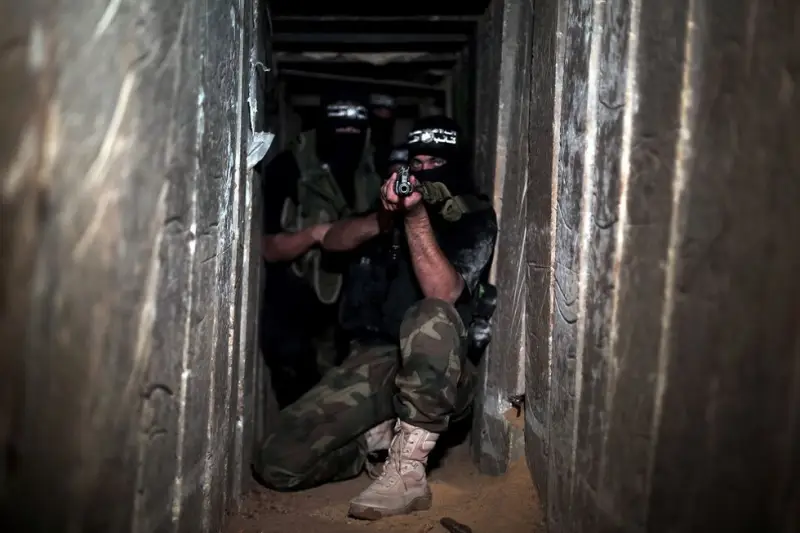
Hamas militants in an underground tunnel
For some time now, much of the Arab-Israeli confrontation has been taking place underground. In the past, Palestinian armed forces built an extensive network of underground tunnels and bunkers under the Gaza Strip and surrounding areas. They are used as shelter, as well as for covertly transporting people and equipment. The Israel Defense Forces are trying to search for and destroy such tunnels, but their network, despite all efforts, continues to exist and be used.
История вопроса
It is believed that the first tunnels in the Gaza Strip appeared no later than the late eighties. Initially, they were built in the area of Rafah, divided between the Strip and Egypt. The builders were local smugglers who wanted to continue shipping various goods across the newly established border. Over time, the number of smugglers and their tunnels gradually grew, and along with it the illegal cargo turnover increased.
Quite quickly, militants from Hamas and other organizations became interested in the tunnels. They began to use dungeons for transportation weapons, crossing the border for certain purposes, etc. At the same time, the construction of new underground passages continued, and the importance of such a project was constantly growing.
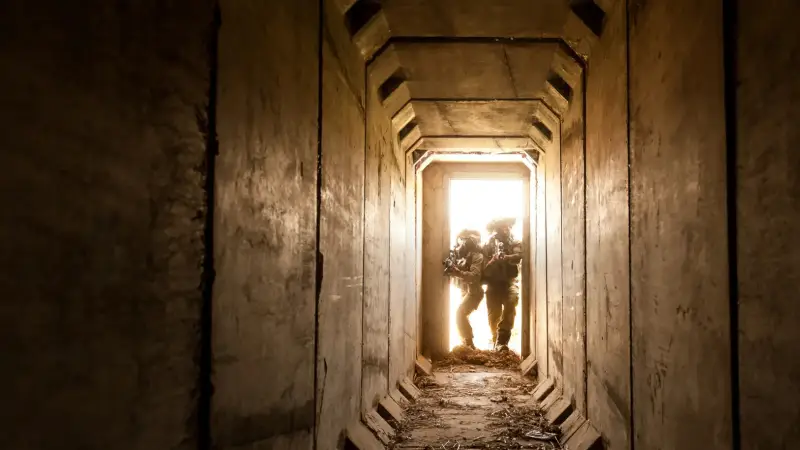
Israeli soldiers enter the tunnel
Underground communications acquired particular importance in the mid-2000s. During this period, the IDF carried out several major operations, as a result of which it became clear that the enemy would not be able to hide in buildings and/or buildings. The IDF made every effort to identify the enemy's location and generally did not constrain itself in the methods of hitting these targets.
Because of this, Hamas and other organizations have expanded underground construction. It was probably at this time that they moved from simple tunnels connecting given points to more serious projects. Networks of underground structures with corridors, halls, warehouses and household premises appeared.
According to past reports, the Palestinians have now built a network of over 500 km of tunnels, as well as a large number of intermediate bunkers, warehouses, etc. At the same time, construction covered new territories, both directly under Gaza and in neighboring countries. At the same time, the tunnels under the border with Israel, going deep into its territory, are of particular importance. The exact number of entrances and exits to the surface remains unknown.
Large-scale construction
The tunnels were built over several decades and the process is likely still ongoing. There appear to be no uniform construction standards. However, known objects have a number of common features that indicate competent and efficient organization of work.
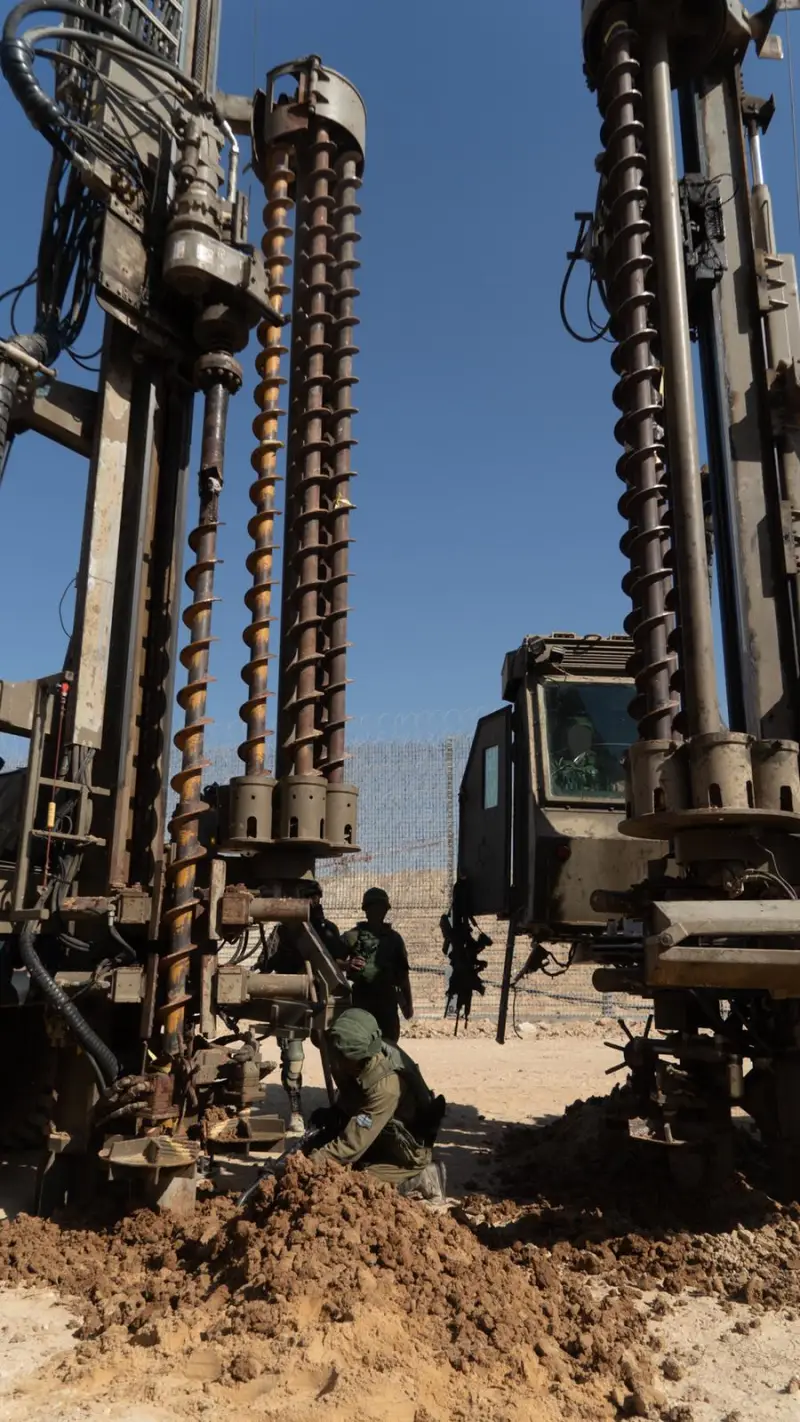
Drilling as one of the ways to find tunnels
Reportedly, most tunnels have a height of about 2 m and a width of no more than 1-1,5 m. This is only enough for the movement of people, incl. with means of small-scale mechanization. There are also larger passages, the width and height of which allow cars to move. Apparently, there are much fewer such tunnels, and they connect only particularly important objects. It has been repeatedly reported that there are underground halls of quite a large area, branches, etc.
Access to the dungeons is through camouflaged and surveillance-protected entrances. They are organized in the basements of buildings, under ground structures, under the cover of vegetation, etc. Depending on the objectives of a particular tunnel, the entrance may be located in urban areas or in open areas. The features of its placement determine the methods of camouflage and use.
When laying tunnels, manual, electric or pneumatic tools are used - the size of the structures allows you to do without more complex equipment. The completed vault is strengthened, most often with concrete. In a similar way, underground rooms, entrances, etc. are built. Most of the discovered tunnels ran at depths of 20-30 m underground. Some went 40-50 m.
Electric lighting is installed in the constructed tunnels. Power and communication cables are also laid along them. They provide power supply to remote underground facilities, data transmission, etc.
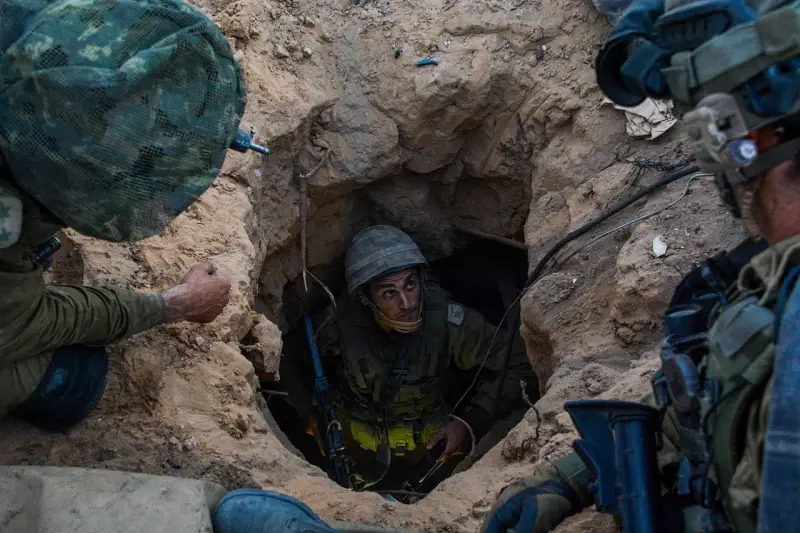
Israeli paratroopers study the discovered underground passage
Based on their location and purpose, Palestinian tunnels can generally be divided into a couple of groups. The first is internal communications within the Gaza Strip. They are used as warehouses, shelters for militants, etc. In the event of full-scale hostilities, they must ensure the defense of the Sector and its populated areas. The second group is tunnels extending beyond Gaza. Smugglers operate in the dungeons leading into Egypt; civilians are also using them to escape the danger zone. Some tunnels lead towards Israel and are used for various sabotage activities.
Fighting the problem
In the 2000s, the IDF and Israeli intelligence services realized the full potential of enemy tunnels and began to take measures to combat them. Work is constantly underway to detect and destroy such objects, and attempts are also being made to prevent their construction. Despite all the efforts of the Israeli military and intelligence services, it has still not been possible to completely solve the problem. Moreover, the Palestinians are learning to counter the enemy's methods, and the Israelis are having to look for new ways and means.
In the search for tunnels and exits, reconnaissance is of great importance. Israel is infiltrating agents and looking for informants who can point to underground structures. Surveillance and reconnaissance are also conducted to look for suspicious enemy activity and other signs. For example, a clue about finding the entrance to a tunnel could be a suspicious person who entered a certain building through a door and did not leave it in the same way.
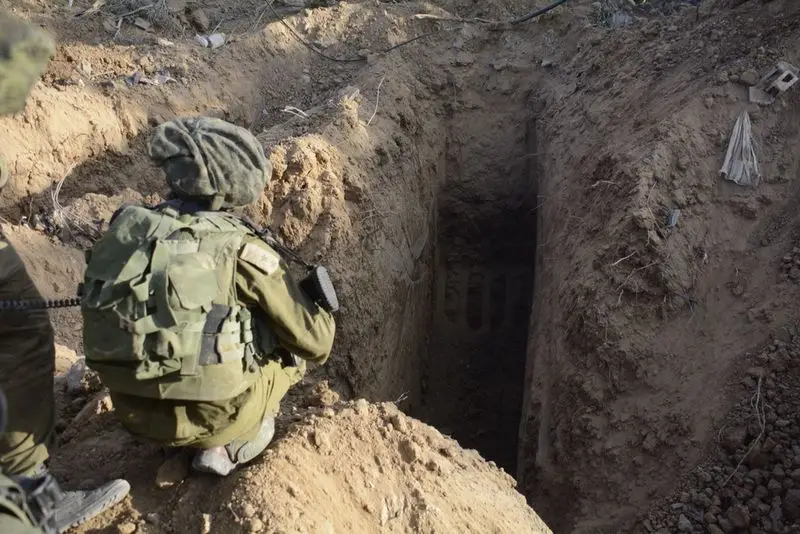
In the process of destroying the entrance to the tunnel
A variety of technical means are widely used. If possible, voids in the ground are looked for using ground penetrating radar and other similar equipment. Last year it was reported about the introduction of the so-called. hyperspectral imaging. This method involves the use of a UAV with a special camera that takes pictures in tens or hundreds of small ranges. By studying and comparing images in different ranges, as well as their combinations, it is possible to identify signs of underground activity.
The IDF has the ability to storm discovered tunnels, but rarely takes such a risk. In such operations, fragmentation and smoke grenades, irritants, etc. may be used. Before working in dungeons, fighters undergo training in special training centers with the ability to simulate tunnels, ambushes, etc.
“Non-lethal” methods of influence are proposed and applied. Both in the past and now, tunnels are filled with water. This forces their inhabitants to flee - if they have such an opportunity. Recently it was reported about the possible use of “foam bombs”: containers with a special composition that forms a large amount of foam and hardens in air. Such a “bomb” can quickly block the passage and, at a minimum, temporarily impede movement along it.
However, most often underground structures are simply destroyed; this matter is entrusted to the engineering units. Depending on the characteristics of the tunnel, they may limit themselves to blowing up the exit structure or demolishing it with a bulldozer. It is also possible that passages and vaults may be undermined or otherwise destroyed.
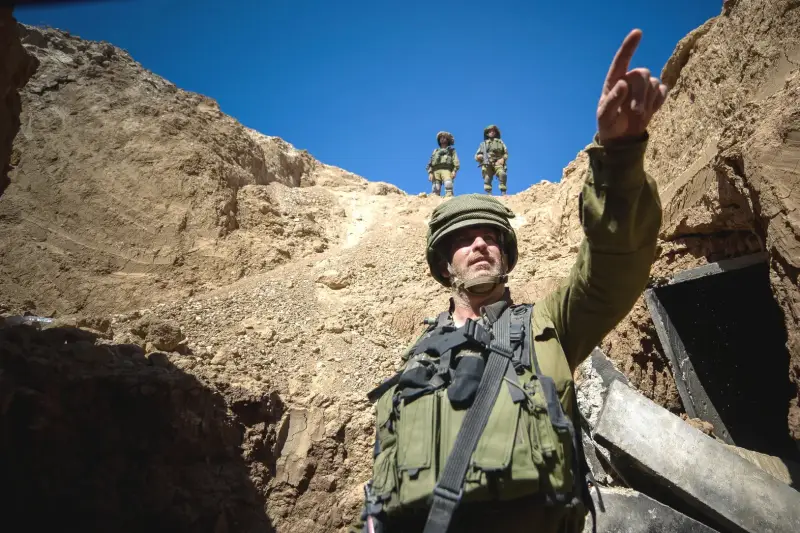
Measures are being taken to protect Israeli territory from underground penetration. For this purpose, in dangerous areas, special systems of obstacles and barriers are built that should prevent the construction of tunnels. As practice shows, such means do not always help.
Underground confrontation
Palestinian organizations have been using systems of underground tunnels and supporting above-ground structures for several decades to solve a variety of problems. The Israeli army and intelligence services, in turn, have been searching for and destroying these objects for a long time to counter unwanted activity in the Gaza Strip. In this case, as one can judge, neither side can gain a decisive advantage.
In the context of the current hostilities and attempts by the IDF to take control of the entire Gaza Strip, the topic of tunnels is of particular importance. Neutralizing these communications or impeding their operation would greatly help the Israeli army in solving its tasks. However, the ability to identify all tunnels, entrances, etc. are simply absent, and the measures taken are clearly insufficient.
All this suggests that the confrontation around the Palestinian tunnels will continue. There are no prerequisites for its cessation yet and are not even expected - in contrast to the desire of the parties to continue the fight until their victory and the complete defeat of the enemy.
Information